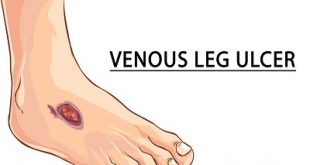Definition
Vocal cord paralysis occurs when nerve impulses to your larynx get interrupted by a neurological condition or by damage to the nerves from trauma, tumor or infection. Not only can the paralysis affect your ability to speak, it can affect your breathing because your vocal cords also protect your airway by preventing food, drink and your saliva from entering your windpipe and causing you to choke.
Unilateral vocal cord paralysis (when one vocal cord is paralyzed) is the most common form of vocal cord paralysis. About one-third are caused by tumors, injury and unknown factors. Bilateral paralysis of both vocal cords is more commonly caused by an injury and is a life-threatening condition because it interferes with your breathing.
Location of vocal cords
Types of Vocal cord paralysis
There are mainly two types of vocal cord paralysis:
Vocal Cord Paresis: When the laryngeal muscles move abnormally due to partial interruption of nerve impulses, the condition is referred to as Vocal Cord Paresis.
Vocal Cord Paralysis: When the laryngeal muscles are completely unable to move due to total interruption of nerve impulses to the voice box, the condition is called Vocal Cord Paralysis.
Risk factors
Factors that may increase your risk of developing vocal cord paralysis include:
Undergoing throat or chest surgery: People who need surgery on their thyroid, throat or upper chest have an increased risk of vocal cord nerve damage. Sometimes breathing tubes used in surgery or to help you breathe if you’re having serious respiratory trouble can damage the vocal cord nerves.
Having a neurological condition: People with certain neurological conditions such as Parkinson’s disease or multiple sclerosis are more likely to develop vocal cord weakness or paralysis.
Causes
In vocal cord paralysis, the nerve impulses to your voice box (larynx) are disrupted, resulting in paralysis of the muscle. Doctors often don’t know the cause of vocal cord paralysis. Known causes may include:
Injury to the vocal cord during surgery: Surgery on or near your neck or upper chest can result in damage to the nerves that serve your voice box. Surgeries that carry a risk of damage include surgeries to the thyroid or parathyroid glands, esophagus, neck, and chest.
Neck or chest injury: Trauma to your neck or chest may injure the nerves that serve your vocal cords or the voice box itself.
Stroke: A stroke interrupts blood flow in your brain and may damage the part of your brain that sends messages to the voice box.
Tumors: Tumors, both cancerous and noncancerous, can grow in or around the muscles, cartilage or nerves controlling the function of your voice box and can cause vocal cord paralysis.
Infections: Some infections, such as Lyme disease, Epstein-Barr virus and herpes, can cause inflammation and directly damage the nerves in the larynx.
Neurological conditions: If you have certain neurological conditions, such as multiple sclerosis or Parkinson’s disease, you may experience vocal cord paralysis.
Position of the vocal cord
Symptoms of Vocal cord paralysis
Your vocal cords are two flexible bands of muscle tissue that sit at the entrance to your windpipe (trachea). When you speak, the bands come together and vibrate to make sound. The rest of the time, your vocal cords are relaxed in an open position, so you can breathe.
In most cases of vocal cord paralysis, only one vocal cord is paralyzed. If both of your vocal cords are affected, you may have vocal difficulties, as well as significant problems with breathing and swallowing.
Symptoms include:
- Breathy vocal quality
- Hoarseness
- Noisy breathing
- Loss of vocal pitch
- Choking or coughing while swallowing food, drink or saliva
- The need to take frequent breaths while speaking
- Inability to speak loudly
- Loss of gag reflex
- Ineffective coughing
If you have unexplained, persistent hoarseness for more than three or four weeks, or if you notice any unexplained voice changes or discomfort, see your doctor.
Complications
There are potential complications of paralysis, particularly when the paralysis is total. Complications include:
- Hoarseness
- Aspiration (food and drink going into the airway) with resultant pneumonia and lung infections
- Chronic cough
How can I avoid having a complication?
Early diagnosis is the key to avoiding these complications. This means coming in for evaluation as soon as you are hoarse or if you have any voice or swallowing changes after surgery.
Diagnosis and test
If you suffer from symptoms of vocal cord paralysis, you should see an ENT (ear, nose, and throat) specialist, or otolaryngologist, who may diagnose your condition from one or more of these methods:
Flexible laryngoscopy: After asking questions about your symptoms, an examination of your voice box will be carried out, using a small, flexible camera that goes through your nose and down your throat to examine the voice box. If this exam reveals vocal cord paralysis or paresis, further tests can be ordered to determine the cause of the paralysis.
CT scan: A CT scan of the head, neck, and/or chest can be ordered to make sure there is no mass or lesion compressing the nerve along its course in the body.
Blood work: Blood tests can be ordered to test for auto-immune diseases.
Laryngeal electromyography (LEMG): A LEMG test measures electrical currents in the voice box muscles that are the result of nerve signals. Your doctor may have you perform certain tasks to test these muscles, then look at the pattern of electrical currents to see whether the nerve signals show signs of recovery or repair, and to determine the degree of the nerve problem.
Treatment for Vocal cord paralysis
Treatment for vocal cord paralysis depends on its underlying cause, if known. Some cases of vocal cord paralysis will resolve themselves over time. If not, treatments may include:
Voice therapy: A speech-language pathologist can teach you exercises to improve your voice and breathing.
Phonosurgery: This procedure involves repositioning or reshaping the vocal cords sometimes with an implant to bring the vocal cords closer together and improve voice and breathing function.
Tracheotomy: When both vocal cords are severely paralyzed, a tracheotomy (breathing tube inserted in the neck) may be the only way to restore breathing.
Thyroplasty: Surgery to place an implant in the paralyzed vocal cord and position it closer to the functioning vocal cord
Arytenoid adduction: Surgery to position the paralyzed vocal cord joint closer to the functioning vocal cord to improve speech, breathing, and swallowing
Laryngeal reinnervation surgery: Procedure to connect a damaged nerve to a functioning nerve to improve nerve signals that control vocal cord muscle movement
Vocal cord injection: This procedure involves using injectable material to make your vocal cord bulkier and easier to move. This kind of injection is performed through the skin that covers your larynx. A laryngoscope is put into your throat so the person performing the injection can insert the material in the correct place. It can take a few minutes for the material to evenly fill the vocal fold. After this type of surgery, you are typically discharged to go home right away.
Prevention
Many causes of vocal cord paralysis cannot be prevented. For example, doctors don’t know how to prevent multiple sclerosis from causing this condition.
It is possible to prevent some cases by being safe. Protect your child’s head, neck, and chest with important safety measures, including:
- Wearing a seat belt
- Wearing a bike helmet
- Using safety gear when playing sports
Avoiding second-hand smoke or other bad air may also help with prevention.
 Diseases Treatments Dictionary This is complete solution to read all diseases treatments Which covers Prevention, Causes, Symptoms, Medical Terms, Drugs, Prescription, Natural Remedies with cures and Treatments. Most of the common diseases were listed in names, split with categories.
Diseases Treatments Dictionary This is complete solution to read all diseases treatments Which covers Prevention, Causes, Symptoms, Medical Terms, Drugs, Prescription, Natural Remedies with cures and Treatments. Most of the common diseases were listed in names, split with categories.







